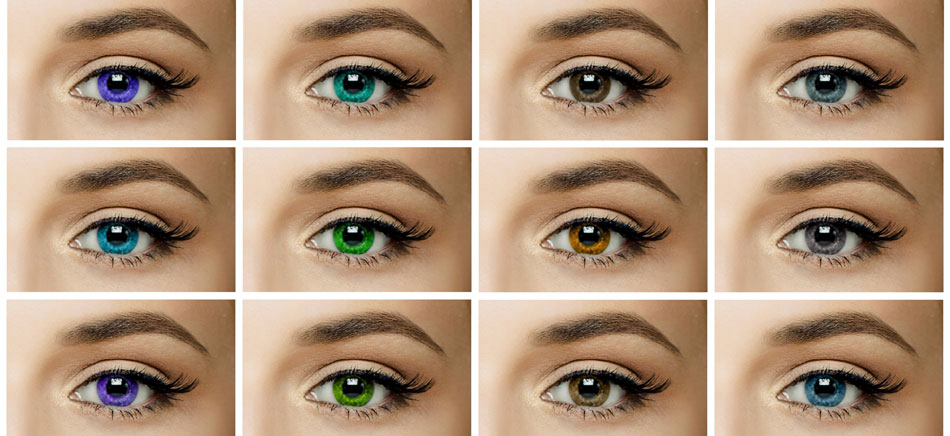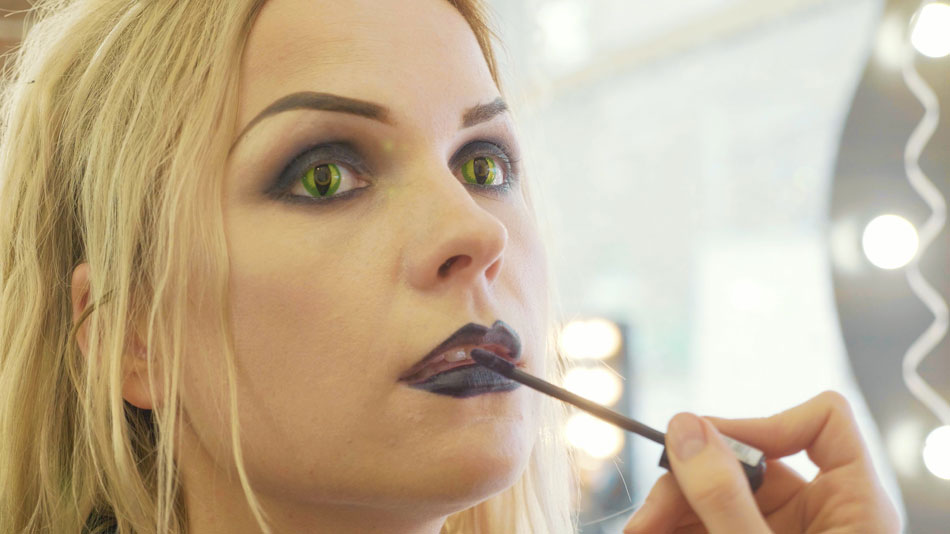Get in the Loop: 6 Types of Contact Lenses You Should Know About

The world of contact lenses can feel like a daunting place. There are so many options!
New contact lens wearers usually don't know ortho-ks from daily disposables. Even with an optometrist's advice, it's hard to know which lenses are best for you.
That's where we come in! Learning the basics about different types of contact lenses is essential. This article will help you make an informed choice for your vision correction needs. Do you like your lenses hard or soft, clear or tinted, daily or extended wear? Let's find out!
1. Soft Contact Lenses
Soft contact lenses were first launched in the 1960s. Their material is a plastic known as hydrogel or silicone hydrogel. Hydrogels are a type of water-absorbing plastic. As long as any fluid, such as contact lens solution or eye drops is present, the lenses stay soft and flexible.
The absorbency allows oxygen to pass through the lenses into your corneas. This keeps your eyes healthy and moist. Silicone hydrogels allow up to five times more oxygen flow than normal hydrogels. This makes them perfect for dry eye sufferers.
Most people find soft contact lenses more comfortable than hard lenses. For newbies, it's far easier to adjust to wearing soft contact lenses.
Soft contact lenses come as monthlies, weeklies and daily disposables. The most popular wearing schedule for these lenses is the daily disposable. Since you don't need to clean daily disposable lenses, there's less risk of infection. The only real drawback is that they cannot correct all types of vision problems.
2. Hard Contact Lenses
Hard contact lenses are also known as rigid gas permeable (RGP) lenses. These lenses hold their shape and are more durable than soft contacts. They also allow good oxygen flow to the eyes. A major bonus of hard contact lenses is that they are less expensive than soft contacts in the long-run.
Hard lenses offer clearer and crisper vision. They are the less expensive of the two choices for people with severe astigmatism. They also correct keratoconus, a condition of misshapen corneas and extreme visual distortion. Presbyopic people also enjoy hard lenses because they come in bifocals and multifocals.
There are some disadvantages to hard lenses. Due to their smaller size, it's easier for hard lenses to slip off-centre or dislodge from the eye. Also, when compared to soft lenses, hard contacts have a longer adjustment period.
But a hybrid version of these lenses is available. This version has a hard lens centre, but a soft lens skirting for easy wear.
3. Extended Wear Contact Lenses

Extended wear lenses are a recent invention. They are usually only available in soft contact form. The extended wear lenses can last for up to 30 days of continuous wear.
These lenses consist of an advanced silicone hydrogel material. This allows for good oxygen flow to your eyes while you're sleeping. Health Canada has approved certain lenses for 30-day wear, such as Air Optix Night & Day.
But not everyone can tolerate wearing contact lenses overnight. Your optometrist will do tests to determine if these lenses are suitable for you.
4. Orthokeratology (Ortho-K) Lenses
Ortho-k contacts are specially designed RGP lenses you wear overnight. They are said to correct several corneal disorders such as myopia, hyperopia and astigmatism. Some can even correct presbyopia.
Myopia, or nearsightedness, is a refractive error from corneal distortion. Hyperopia is another refractive disorder which results in farsightedness. Astigmatism generates blurred vision.
By wearing the ortho-k contacts while you sleep, you treat the corneal distortions. In the morning, you remove the lenses and enjoy perfect vision all day.
However the Canadian Ophthalmological Society (COS) does not endorse ortho-k lenses. Wearing these lenses overnight increases the risk of eye infections such as microbial keratitis.
It is also the case that the vision correction offered by ortho-k lenses is only temporary. In order to get consistent results, you must wear them every night. For these reasons, some find the expense and discomfort of wearing ortho-k lenses not worth it.
5. Coloured Contact Lenses

Coloured contact lenses are available in RGP and soft varieties. But soft coloured lenses are more commonly used.
Coloured contact lenses come in three different tints. A visibility tint is a light shade designed to help you detect and inspect your lenses. This sort of tint will not alter the colour of your eyes.
The second type of coloured contact has an enhancement tint. These lenses, such as the 1-Day Acuvue Define range, offer a subtle boost to your natural eye colour. The enhancement tint makes your eyes appear larger and more expressive.
The final variety is an opaque tint. These coloured contacts will transform the colour of your eyes. They are the only tint that can change the colour of dark eyes. Impressions Color Contact Lens are one of the most popular opaque tinted contacts. They are available in a wide range of colours.
All three types are available as prescription and plano (zero power) lenses.
6. Decorative Contact Lenses

In 2016, Canada made decorative contact lenses regulated as Class II medical devices. This means that manufacturers need a license to sell decorative contacts.
Decorative lenses have many names: fashion, cosmetic, coloured and special effects lenses. Sales of special effects lenses spike annually around Halloween. This coincides with an increase in contact lens-related eye infections.
Fashion lenses change the look of your eyes without correcting your vision. However, they pose a greater risk to your eyes than corrective lenses do, as they are often ill-fitting. You should always get a prescription for the ideal fit.
Don't buy cosmetic lenses without a prescription and don't buy from unlicensed manufacturers or disreputable retailers. This puts you at a greater risk of complications. You may experience an allergic reaction, infection or permanent eye injury. All this is to say that those fun lenses at the costume store may look great, but they're not worth risking your eyesight for.
If you have bought colour lenses whose quality is suspect, remove them immediately if you have vision changes, redness, watery or painful eyes. You should then visit your optometrist for medical help.
To still enjoy the dramatic effect of changing your eye colour, have a look at the top colour contacts brands that PerfectLens.ca carries.
There Are Lots of Options to Choose From!
You should now be familiar with the different types of contact lenses that are available. We have also explored the pros and cons of each type. Do you feel well-informed?
If so, you may feel ready to buy some contacts. Browse a wide range of available contact lenses to find the perfect pair for you!
